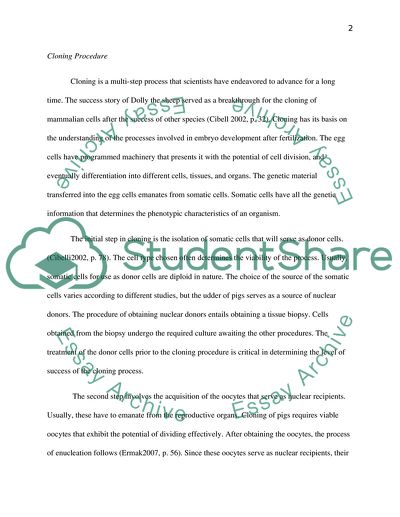Cite this document
(“Cloning of Pig Cells Essay Example | Topics and Well Written Essays - 1000 words - 1”, n.d.)
Cloning of Pig Cells Essay Example | Topics and Well Written Essays - 1000 words - 1. Retrieved from https://studentshare.org/biology/1489592-case-study-pick-anything-you-like-to-clone-product-cloning-in-mammalian-cell
Cloning of Pig Cells Essay Example | Topics and Well Written Essays - 1000 words - 1. Retrieved from https://studentshare.org/biology/1489592-case-study-pick-anything-you-like-to-clone-product-cloning-in-mammalian-cell
(Cloning of Pig Cells Essay Example | Topics and Well Written Essays - 1000 Words - 1)
Cloning of Pig Cells Essay Example | Topics and Well Written Essays - 1000 Words - 1. https://studentshare.org/biology/1489592-case-study-pick-anything-you-like-to-clone-product-cloning-in-mammalian-cell.
Cloning of Pig Cells Essay Example | Topics and Well Written Essays - 1000 Words - 1. https://studentshare.org/biology/1489592-case-study-pick-anything-you-like-to-clone-product-cloning-in-mammalian-cell.
“Cloning of Pig Cells Essay Example | Topics and Well Written Essays - 1000 Words - 1”, n.d. https://studentshare.org/biology/1489592-case-study-pick-anything-you-like-to-clone-product-cloning-in-mammalian-cell.


